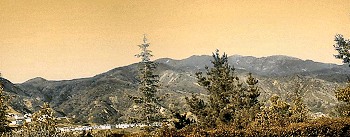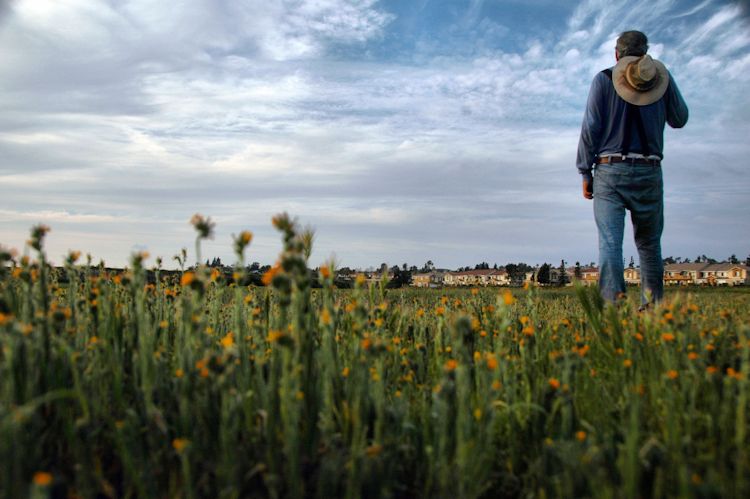Pax Nortona – A Blog by Joel Sax
From the Land of the Lost Blunderbuss
Home - Daily Life - Neighborhood - Vulcan’s Children
Vulcan’s Children
Posted on July 24, 2002 in Neighborhood
“…And I am borne on a wandering wind/Hollow, hollow all delight!”
Alfred Lord Tennyson, The Idylls of the King
Despite the blessings of the summer so far, I’ve been watching the slopes of Mounts Modjeska and Santiago with some trepidation. The slopes are covered with fine hairs of blonde grass that will certainly go red and then black should a spark touch them. These mountains are covered with chamise, which is also called greasewood. Greasewood is not only filled with a sap as flammable as any petroleum distillate: it is territorial. It expands its domain by burning hot when the fire storms of autumn sweep across it. The surrounding vegetation — the sage, the buckwheat, the prickly pear — cannot withstand the incinerating temperatures at which the greasewood burns. Chamise raises the ante and when a fire burns through a patch of it, mixed or pure, all that is left is a carboniferous desert that repels water.
The other vegetation disappears entirely. The greasewood, however, lurks in deep roots. When water seeps down to them, these remnants sprout and advance into new provinces previously held by other plants. The mountain becomes more flammable than before.
Where long grasses burn off quickly, greasewood smolders. One good wind blowing over a recently torched slope can pick up nuggets of flame and rain them down on houses and unburned tracts down the canyon. Wooden roofs and thick plantings of just about any kind of tree shading the house invite desolation in these parts. Eucalypts, for example, explode at the crown and send their smoldering tinder skyrocketing into the sky. If a bit of ash falls on a wood roof the house may be lost. The fire station half way between me and the local biker bar has a sign up: GOT CLEARANCE? We’re doing good here: we have tile roofs and, except for the purple plum tree leaning against the wooden deck, nothing growing close to our building. When I see flames coming down the mountainside, the purple plum tree dies by an axe I keep down in the garage.
I’ve seen some big fires in my time, conflagrations that swept across the foothills of the San Bernardino Mountains in minutes. They were a pretty sight at night when the orange lines slowed in their progress over the hills as if to give the firefighters a rest; they were most horrid during the day when they spewed smoke tumors and dropped glowing, nigreous flakes of hot carbon onto our street, some two miles behind the city limit. The heat of the day reinvigorated the sluggish blazes and as the fires themselves generated new winds, they resumed their quick march over the acres of volatile fuel that the divine patrons of the greasewood had liberally strewn in their path.
The last such fire I saw was along Interstate 15 just after Lytle Creek. Lynn and I were setting out on our fall vacation in Utah just after dawn. I saw it first: a thin red line of flame, followed by an oily fumarole, and, behind the smoke, leveled blackness. Lynn had never seen a brush fire before and was a little surprised that the whole hillside wasn’t in flames — just the narrow bit between what had been destroyed and what was destined to be consumed next. I thought of the pets and the investment we’d made in our condo. Would we come back to kitty roasts and cinders?
You can pray, if only for comfort and if things go bad, to help acceptance along. Disasters are the exception I know, but the whiff of Kris’s BBQ across the way still causes me to rush to the deck and look for the smoke writhing out of the folds of our mountains. To bolster my comfort, I shall knock on wood and hope that I shall not have occasion to tell you my eyewitness account of Vulcan’s children passing the ophidian torch as it sidewinds down the chaparral-covered slopes of the Cleveland National Forest.


